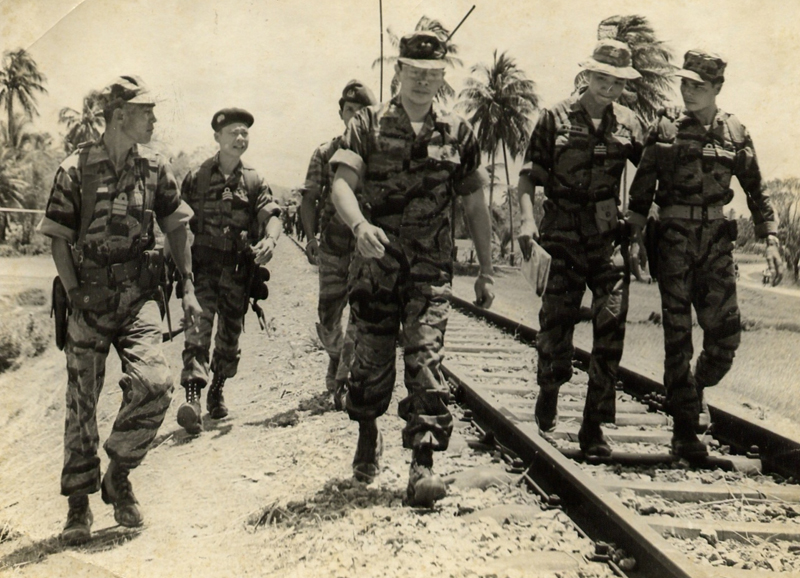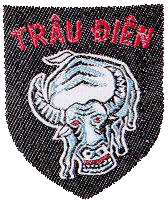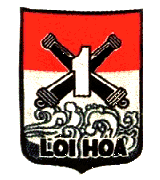Written by: Colonel Hoang Tich Thong
I. The
General Situation I. The General SituationAfter the ARVN had attempted a coup to overthrow President Ngo Dinh Diem, the security and military situation in South Vietnam deteriorated. The generals in government had no political ability, and were obsessed with holding the big positions. Thus cracks developed inside the ARVN since there were numerous factions competing with each other for the top jobs. Lack of cohesion, distractions like gaining the best position - these weakened the ARVN, which did not perform as well as before its role of searching and destroying the enemy. The strategically program, which had been well established under President Ngo Dinh Diem, had also been abandoned in favor of the “New Life Hamlet Program”. One by one, the country areas slowly fell into communist hands, and particularly so in II Corps in the centre of Vietnam. The rate at which they fell was truly alarming. The government and ARVN controlled only the villages and districts along the provincial routes and of course the national route. The districts of Dakto (north of Kontum) and Tan Canh in the central highlands were invaded. It was against this backdrop that a Marine Task Force of the Brigade, a National Reserve was called in to reinforce the 22nd Infantry Division, the headquarters of which were stationed at Mount Ba Di in the environs of the city of Qui Nhon. The Task Force had been newly formed upon tactical request. It was commanded by Lieutenant Colonel Nguyen Thanh Yen, and was composed of two fighting battalions and one 75mm pack Howitzer Company. Major Ton That Soan commanded the 1st Marine Battalion, and I was the commander of the 2nd battalion. The Artillery Company had four guns, and was under the direction of Lieutenant Doan Trong Cao.
The Task Force was airlifted from Tan Son Nhut Air Base to Qui Nhon airfield by C.123s in April 1965. From there we were transported by a convoy of trucks to the 22nd Infantry Division's headquarters. There, we received orders to go to the district of Bong Son to prepare the assault on the enemy who had seized control of the Tam Quan district. II. The Security Situation and the Terrain of the Area of OperationBong Son was situated on National Route 1, about 60km from Qui Nhon. It was a moderately prosperous district and was also the point of entry to An Lao. From there one could reach Kontum. The captured district of Tam Quan was thus very important tactically and strategically. Before 1954 it had been controlled by the Communists, and the French troops had failed to invade it. The political chaos following 1963 allowed the Communists to occupy the area between the provinces of Qui Nhon and Quang Ngai: consequently, the National Route 1 was out. In the face of such a situation, the 22nd Infantry Division and the troops from Binh Dinh basically had their arms tied. They did not have the might to perform such a large scale operation as was needed to fight unaided against the regular units of the NVA's 3rd Division - “Yellow Star”. The situation was hardly ameliorated by the increased activities of the Communists' regional and guerilla forces in the area. The terrain boasted many obstacles and did not favor the attacking forces. From Bong Son to An Do (Hill 10) near Duc Pho district in the province of Quang Ngai, I Corps, there were tall hills and mountains with immense coconut tree forests. On the east, there were villages surrounded by large clumps of coconut trees running all the way out to sea. Our target - Tam Quan was situated on National Route 1, 7.8km north of Bong Son. It goes without saying that it was surrounded by rows and rows of coconut trees, making it particularly difficult to attack. Along the section of Route 1 between our target and An Do (Hill 10) there were great expanses of open fields. Running parallel to the route, to its east, was the railroad. Intelligence sources had told us that the NVA 3rd Infantry Division was lurking in the mountains in the west, waiting for a good moment to invade Bong Son - currently being protected by Major Long Tu Thin's regiment from the 22nd Infantry Division. Meanwhile, enemy regional and guerilla forces kept their grip over the villages and hamlets which they had invaded. III. The OperationA. The Marine Task Force was to liberate the village of Tam Quan, and a section of the National Route 1: from Bong Son to An Do. Upon reaching An Do, they were to press northwards to Binh De Pass at the border of Duc Pho District in the province of Quang Ngai (I Corps). Afterwards it was to maintain the security of the area and help the governing bodies reestablish themselves in the village of Tam Quan and its subordinate hamlets. B. The concept of the operation involved having the Task Force airlifted from Bong Son to a landing zone south of An Do. From there it would advance and occupy Hill 10. It was to establish a fire support base to aid it in recapturing Tam Quan and the section of the National Route 1. It had been decided that the first phase would consist of having the 2nd Battalion airlifted out at 8.00am by H.21 helicopters. They would be dropped off at Alpha landing zone, 100m south of An Do village. From there, it would strike out and attack the village and Hill 10. Phase two would then, come into play. Under artillery barrage, the 2nd Battalion was to advance on both sides of the national route and the rail road to attack Tam Quan. The third phase would begin in Tam Quan from whence the battalion would continue south to liberate the next segment of the national route, before meeting up with the units stationed at Bong Son. The fourth and final phase would again involve the expansion of the areas of security and help the governing bodies reestablish the local government. The 1st Marine Battalion also had its list of allotted tasks. After the 2nd Battalion had been moved out, the 1st would also be airlifted out to the same landing zone. Its first phase involved searching around the village of An Do before invading Binh De Pass, on the border of I and II Corps. Then during the second phase it was to replace the presence of the 2nd Battalion in An Do and Hill 10. This would then enable a fire support base to be established to protect Marine Task Force headquarters as well as the Artillery Company on Hill 10. The 1st Battalion was also to act as a reserve, ready to enforce the 2nd Battalion if the need ever arose. The Marine Task Force Headquarters and the Artillery Company would be airlifted out at the same time as the 1st Battalion. But whilst the Headquarters would be dropped off with the battalion at Alpha landing zone, the Artillery Company was to land directly at the foot of Hill 10. After that, it was to begin its ascent. The second phase demanded that they provide fire support to both the 1st and 2nd Battalion. As for the Marine Task Force, it was to move about with the battalion as was necessary. C. The Progress of the Operation. The Second Marine Battalion. Phase 1: At 8.15am a company landed at Alpha with the support of helicopter gunship without encountering any enemy resistance. It occupied the border of the village of An Do and protected the landing zone. The remaining companies continued to land; the landing was safely completed at 12 noon. The 2nd Battalion occupied An Do and Hill 10 successfully. Phase 2: The 2nd Battalion left the newly occupied targets at 3.00pm when the 1st Battalion arrived. (The Marine Task Force Headquarters and the Artillery Company had both completed their landing.) The 2nd Battalion continued their duties, launching into a two pronged advance on Tam Quan. Alpha Command Group (composing of Battalion Headquarter and two companies) took the road on the east. Bravo Command Group (within which was the executive officer and two other companies) approached from the west. During the advance they encountered no resistance. The terrain was clear and empty and they could observe easily. At Tam Quan itself, some skirmishes ensued, but the battalion suffered no losses. Though few, the people there seemed calm, continuing their everyday activities and showing no signs of fear. The battalion reached the centre of the village at four in the afternoon. The Battalion Headquarters stationed itself in an abandoned Maternity Hospital which had stood empty ever since the Communists had invaded Tam Quan. One company took up position around the building to protect the headquarters. The other three companies continued the move south. The 3rd Company, commanded by Captain Nguyen Nang Bao, marched along the National Route towards Bong Son. Captain Ngo Van Dinh's 4th Company advanced from the west of the national route and occupied a high point southwest of Phung Du (about 700 to 800m away from headquarters). The 1st Company, commanded by Captain Pham Nha moved after, surrounding Phung Du hamlet at 6.00pm. During the advance, the 3rd Company met enemy resistance about 400m south west of Phung Du. They stopped, and camped there overnight. When headquarters heard word of the confrontation half an hour later, they decided to move to the 1st Company's position so they could keep an eye on the situation. The 2nd Company, commanded by the executive officer Captain Hay, stayed where it was, and there things were calm... until sometime after midnight. At 1.00am the Viet Cong began to apply the tactics of “artillery first, then charge”. They started to hammer the centre of our positions with salvos of 82mm and 60mm mortars. The first round fell at the corner of the house, close to where the Battalion Commander and the American Advisor slept. Shrapnel pierced the air mattresses but amazingly neither were hurt. Both sides filled the air with explosions. The enemy attacked mainly from the west. Phung Du was a small hamlet with houses scattered underneath tall coconut palms; the terrain hardly favored creating a defense. Nevertheless, the 1st Company had managed to dig a system of trenches, thus several waves of enemy attacks were repelled. The Battalion Commander radioed headquarters requesting the Artillery Company to provide fire support from Hill 10. Since the maximum range of the 75mm pack Howitzer was 9km, they could only reach north of our position. So I ordered the 4th Company to use their 60mm mortars and machine guns to give fire support, telling them to aim it mainly at the west flank of the defensive line where the enemy was most concentrated. The 2nd Company in the north, and the 3rd Company in the south were ordered to be ready to reinforce. The enemy continued to attack the 1st Company and the Battalion headquarters. The assault accelerated; mortars, B40s and B41s rained down. Our defensive line was nearly breached. The Marines were armed with their personal weapons, middle sized machine guns, machine guns type “30”, 60mm mortars, and 57mm recoilless rifles. Early in the morning the 1st Company reported that its ammunition was running low. They requested the protection squad of the Battalion Headquarters; they also wanted more “30” machine guns. The enemy's attack showed no signs of diminishing. At day break we were joined by the 3rd Company. Both companies were then ordered to cross the defensive line to counter attack. At the same time the 4th Company was ordered to move to the northwest to block the enemy's retreat. The 2nd Company moved to the southwest to complete the “circle” around the enemy. In the face of the fierce counter attack, the enemy started to run. Only a few of them succeeded. The rest sought refuge in a trench which they had dug previously: they were subsequently annihilated by the Marines. When the day had well and truly begun the battle was already over. NVA bodies lay only 3m from our trenches. Their corpses littered the fields. After nearly 5 hours of fierce fighting, the battalion (especially the 1st Company) had emerged victorious. They had repelled countless charges from the enemy. We had had only our firearms but also the very effective support of the Artillery. An hour after the fighting had been concluded, we were joined by the Brigade Headquarters and the 1st Marine Battalion. The Commander of the 22nd Infantry Division, Brigadier General Nguyen Thanh Sang also paid us a visit. Then in the afternoon, Major General Nguyen Huu Co - commander of II Corps flew in to see us from Pleiku. After surveying the battle field he turned and said, “You were forced to defend in such unfavorable terrain and you guys still managed to win. It is truly impressive.” 150 of the enemy had been killed, and 10 had been captured. 100 NVA's personal firearms had been seized, as well as collective weapons. Incredibly, we had had very light losses: about 5 had been killed, and 10 injured - needless to say our weapons remained within our possession. Afterwards we received more ammunition. The killed and the wounded were med evacuated to Qui Nhon. The rest of the Battalion rearranged itself, preparing for another possible attack if the enemy returned to recover their dead. The 1st and 2nd Companies remained with Battalion Headquarters. The 3rd and 4th Companies went back to completing their task of liberating the national route back to Bong Son. As had been foreseen, the enemy started assaulting again towards midnight, but this time with much less intensity. They retreated only after 15 minutes. Later we discovered that they had tried to recover the bodies, amongst them some of their top commanders. In the days which followed, the 2nd Battalion fulfilled all its orders. It had complete control of Tam Quan, it had liberated the national route, and local government in the area had been restored. Until the day the Marine Task Force left, no other fights of significance had come to pass. IV. DiscussionAfter the battle, an assessment was carried out to review the situation. In contrast to the heavy losses suffered by the NVA regiments, we had had very light losses. The NVA would need quite a while before it would be able to recover its fighting capacity. Following this victory, the fighting spirit of the marines soared. Up until then the situation in South Vietnam had been very bad... following the battle of Binh Gia 1964, the battle of Tan Canh and the loss of the district. Then there had been the battle at Duc Co Camp on the Cambodian border, the siege of Phu Bon, and to top that off, National Route 19 (from Qui Nhon to Pleiku) and Provincial Route 22 (from Ban Me Thuot to Nha Trang) had been cut off. The Marine Corps, particularly the 2nd Battalion had participated in all the rescue operations in these areas. One of the reasons why the NVA had been defeated in Phung Du can be traced back to their inaccurate intelligence. They thought that their had been only one Marine Company there: they had not realized that the Marine Battalion Headquarters had moved there as well. Consequently the 1st Company's defense had changed significantly. Battalion Headquarters, the 81mm mortar platoon, the signal platoon, and the protection squad had all been stationed in the same area. Not surprisingly, all the assaults there had been repelled. Moreover, the enemy had reckoned without the 4th Company: consequently they had found themselves the target of 60mm mortars, and “30” machine guns delivered by the 4th Company. At that time, the victory at Phung Du became one of the brightest points in the Marine Corps' (and particularly the 2nd Battalion's) performances. The 2nd Marine Battalion was later dubbed by the enemy as the “Crazy Buffaloes” as they always stormed forwards recklessly to charge, regardless of how numerous the foe were. During my entire time in the ARVN, I never witnessed a single battle where the 2nd Battalion had been defeated. In my
career, I have served from the position of Company Commander to that
of Brigade Commander. I have witnessed many battles but our victory
at Phung Du remains my “favorite”. For me it reads as the most
beautiful and heroically memory from my experience as a soldier.
Although, dear reader, do spare a moment to remember the Marines who
were killed in action that day.
email bixitrum@yahoo.com
|
|||||||
|
|||||||
|
|||||||



